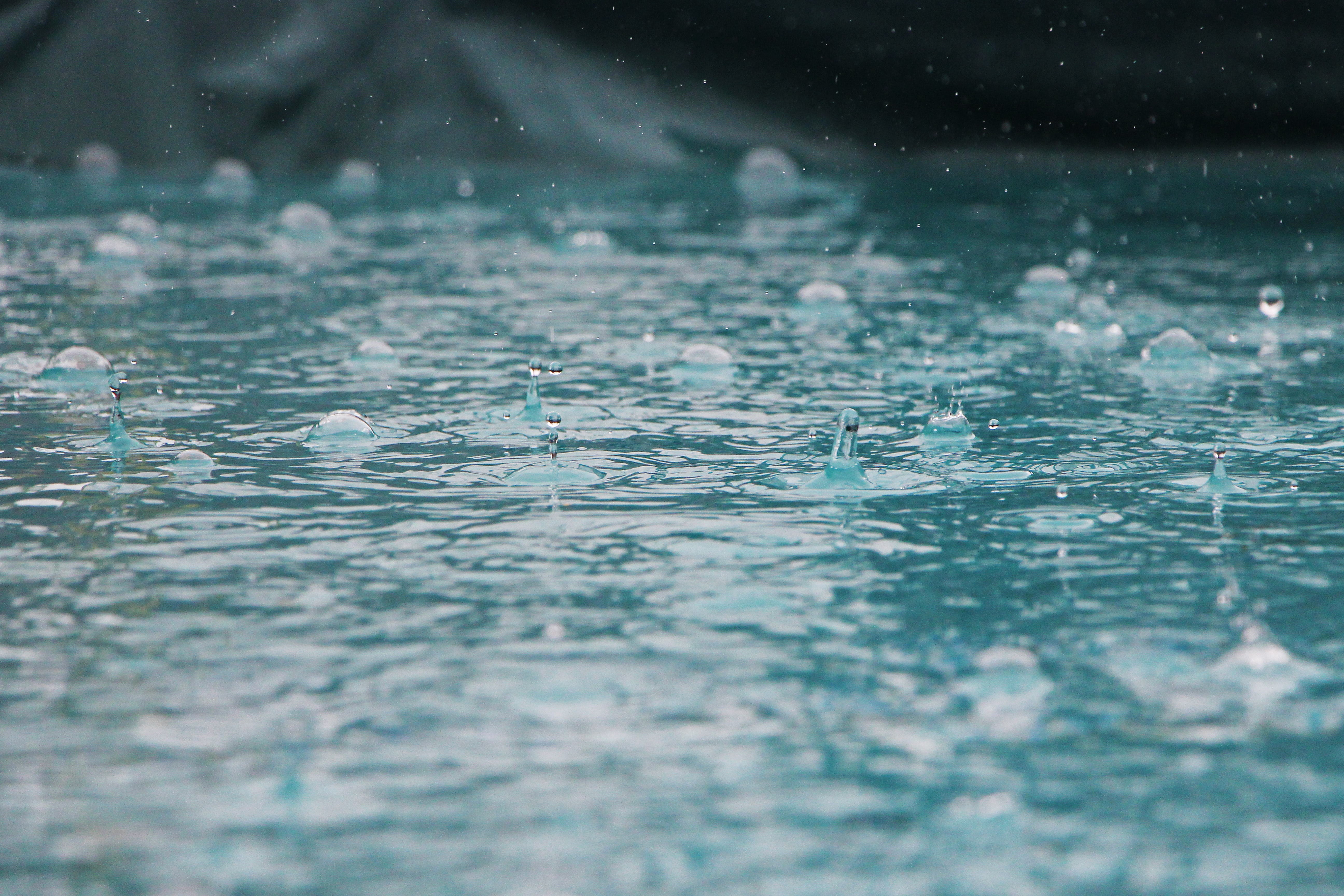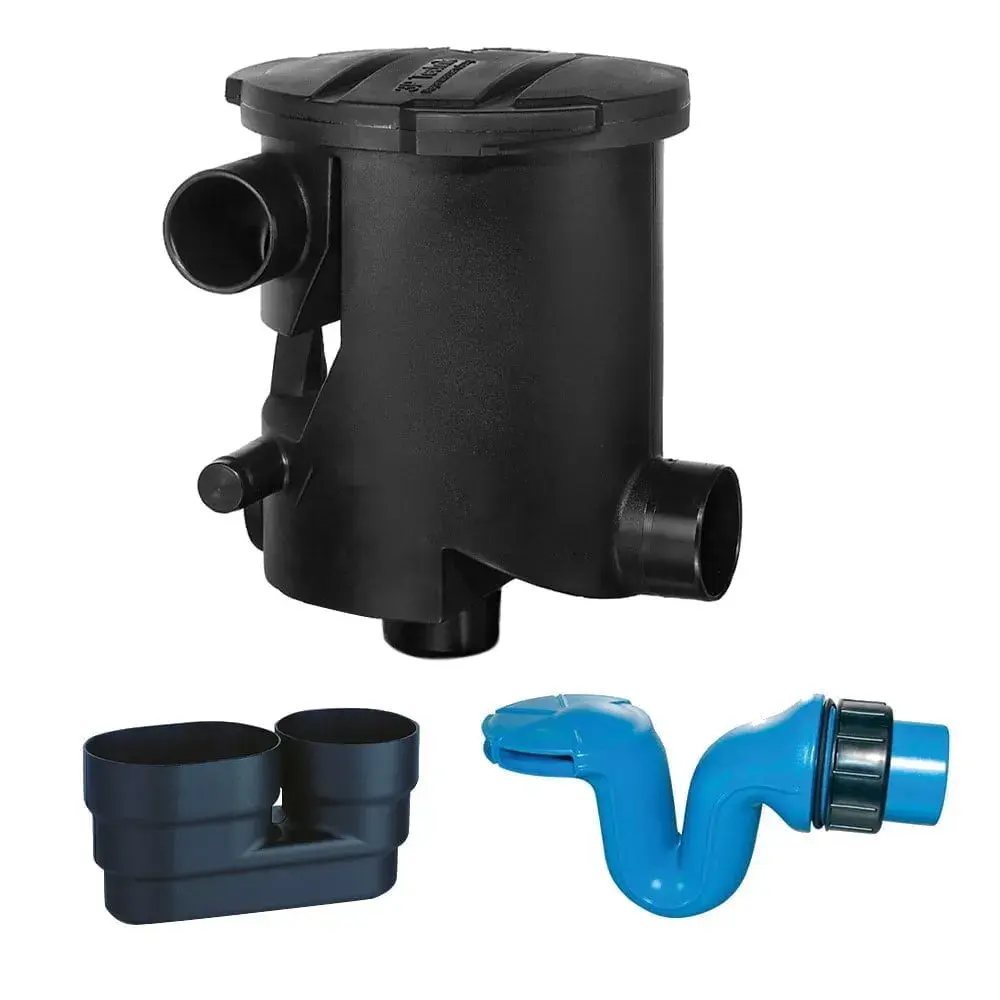
Most large-scale commercial and agricultural rainwater harvesting tanks are situated underground, leaving many of their mechanisms a mystery. Safe and efficient harvesting benefits from good maintenance, so here’s a look inside the box.
Collect the water with a pipe
Pipes are the first phase of any rainwater harvesting system. Their role is to channel the water via the filtration unit and into the collection tank. In some systems, the pipes collect the water from the rainwater downpipes, but the majority are connected to the stormwater drainage system. The most efficient setups utilise a single, large pipe that draws from all water sources, which has the added bonus of requiring just a single filter. As filters are the main component requiring maintenance, careful design can help save time and minimise cost. Always check filters regularly to remove any debris, such as leaves, that may reduce the water flow rate and undermine the efficiency of the system.
Store The Water In a Tank
The quality of the tank is central to the safety of the water. Even when water is not used for drinking, it can pose significant health hazards if the tank is unhygienic. A good rainwater harvesting kit includes a tank made of either high-density polyethylene or glass reinforced plastic (GRP). Both materials are durable and have surfaces that resist bacterial contamination. They are also very easy to clean, which is an essential element of water tank health and safety. Tanks are usually embedded in stone or concrete casings and are located 1.2 metres underground, with maintenance access provided by a hatch. The positioning of the tank helps to keep it cool and away from sunlight, both of which can reduce water quality and damage the tank.
Control With a Power Supply
The power supply and control box are the main user interface for the system. Located above ground in a utility room or similar structure, the control box connects to wires and sensors that control the pump and float switch. Advanced rainwater harvesting systems integrate diagnostic software to troubleshoot any problems and offer feedback on critical functions and maintenance requirements. As storing rainwater underground usually requires the use of pumps to move the water, a good control unit can help reduce maintenance costs by identifying issues before they become serious, and can also ensure maximum system efficiency.
What Next?
As the world meets the challenge of the climate crisis, rainwater is recognised as being one of our most valuable resources. Collecting and storing rainwater can be an effective way to reduce mains water demand in a way that is safe and cost-effective, but only when the system combines the correct design and materials. To learn more about what’s involved in safely and efficiently harvesting rainwater from your business, please get in touch with one of our fluid management specialists.
Image Source: Unsplash
Posts By Topics
- Blog (303)
- Chemical Storage Tanks (118)
- Chemical Dosing Tanks (114)
- Chemical Tanks (114)
- Water Tanks (58)
- Rainwater Harvesting Tanks (43)
- Vertical Rainwater Tanks (31)
- Vertical Storage Tanks (31)
- Cone Bottom Tanks (19)
- Conical Cone Tanks (18)
- Rainwater Harvesting (17)
- Water Bowsers (15)
- Horizontal Tanks (14)
- Potable Water Tanks (13)
- Farming (9)
- Case Studies (8)
- Industrial Storage Tanks (7)
- Liquid Fertilser Storage Tanks (6)
- WRAS Approved Potable Tanks (6)
- Wine and Beer Production (6)
- Horizontal Transport Tanks (5)
- Microbrewery (5)
- Rainwater (5)
- Category 5 Break Tanks (4)
- Cider Production (4)
- Mixer Tanks (4)
- Molasses Tanks (4)
- Polyethylene tanks (4)
- Rainwater Filter Kits (4)
- SPECIALIST & BESPOKE TANKS (4)
- Bunded Tanks (3)
- Slimline Tanks (3)
- WRAS Approved (3)
- Clarification Tanks (2)
- Crosslinked Polymer Tanks (XLPE) (2)
- Fertiliser Tanks (2)
- Sump Tanks (2)
- Tank Installation (2)
- Water Butt (2)
- underground water tanks (2)
- ACCESSORIES & FITTINGS (1)
- ATV & UTV SPRAYING UNITS (1)
- Above Ground Effluent Tanks (1)
- Bespoke Tank Frames (1)
- Category 5 Turret (1)
- Caustic Soda Tanks (1)
- Closed Top Bunded Tanks (1)
- Craft beer (1)
- Effluent Tanks (1)
- Enduramaxx (1)
- Ferric Chloride Tanks (1)
- Fire Safety Regulations (1)
- Fire Sprinkler Water Storage Tanks (1)
- Industrial Water Tank (1)
- Open Top Bunded Tanks (1)
- Open Top Cone Tanks (1)
- Open Top Vertical Tanks (1)
- Polyethylene Potable Water Tanks (1)
- Polyvinylidene Fluoride (PVDF) Tanks (1)
- Polyvinylidene Fluoride Tanks (PVDF) (1)
- Pressure Washers (1)
- Pro Series Spot Sprayers (1)
- RWH (1)
- Sodium Hydroxide Storage Tanks (1)
- Sprayer Fill-up Tanks (1)
- Uncategorised (1)
- liquid fertiliser tank (1)
Sign up to the newsletter
enduramaxx.marketing
Related Posts
A Guide On How To Harvest Rainwater On A Farm
A lot of farmers carry out rainwater harvesting on a farm for use for sprayers, washdown, pressure...
Types Of Rainwater Harvesting Systems
There are many benefits of installing a rainwater harvesting system for gardens, there are many...
Rainwater Harvesting Calculator UK: How Much Rainwater Can I Save?
Rainwater harvesting calculator UK – rainwater harvesting can be carried out on any building...
Related Products
From £1,080.00 inc. VAT
£900.00 exc. VAT
From £1,344.00 inc. VAT
£1,120.00 exc. VAT
From £768.00 inc. VAT
£640.00 exc. VAT
£480.00 inc. VAT
£400.00 exc. VAT






